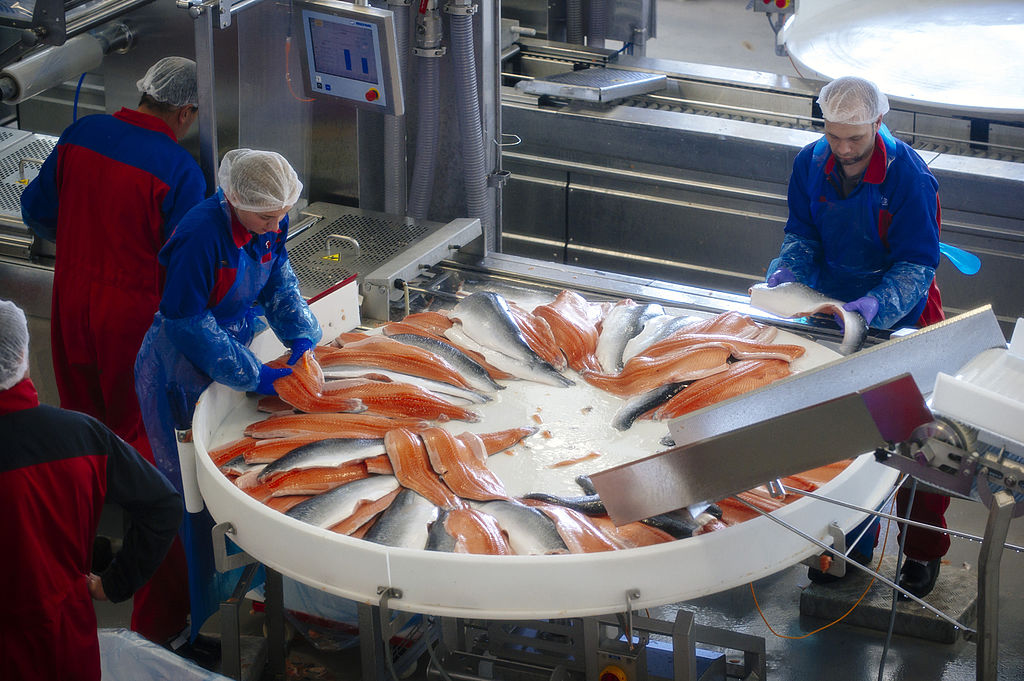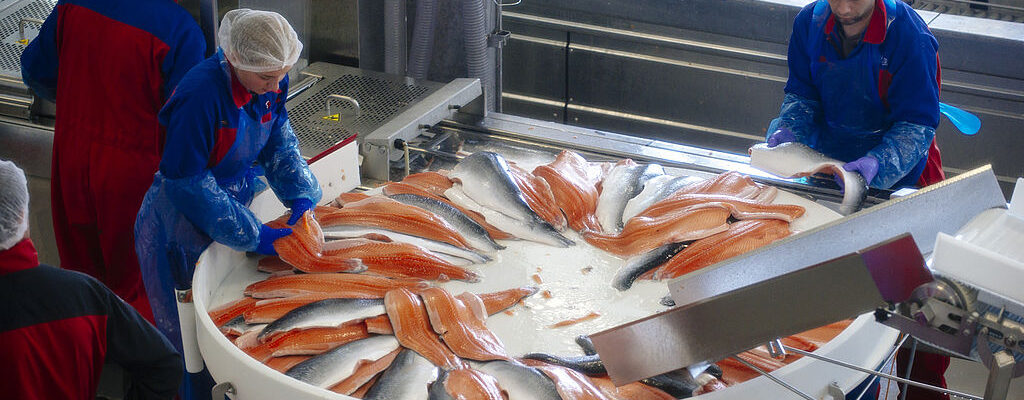Why Massive Numbers of Farmed Salmon Are Dying

The popularity of farmed Atlantic salmon on dinner tables worldwide has been a disaster for the king of fish. A new study determined that 865 million farmed salmon have died in mass die-offs in the last decade. The scientists blame the deaths on several factors, from ocean warming caused by climate change to the aquaculture industry’s overuse of antibiotics and pesticides and its aggressive attempts to increase production. Beyond the staggering number of dead fish, the findings raise questions about the future of growing salmon in cages on the ocean—and aquaculture in general.
[time-brightcove not-tgx=”true”]
Salmon farming has expanded rapidly in the past 25 years into a $20 billion-a-year industry. Farmed salmon are advertised as an environmentally friendly and sustainable solution to the need for animal protein for the world’s growing population. But mass die-offs and other controversies have challenged these claims.
Salmon are raised in crowded cages floating near coastlines, called open-net pen farms. A single farm can contain a million or more fish, leading to high concentrations of diseases and parasites that kill farmed salmon and endanger nearby marine life and migrating wild salmon. The nets extend 30 feet below the surface and allow currents to sweep excess feed, excrement, and chemicals into the surrounding waters.
The peer-reviewed paper published this month in Nature was the first to analyze global data on these sudden die-offs. The scientists found that these events are increasingly common and killing more fish. The data came from the four largest salmon-producing countries, Norway, Chile, the United Kingdom, and Canada, as well as two smaller producers, Australia and New Zealand.
Among the common causes were lax government regulation, competition among companies to meet rising demand, and warming waters caused by the climate crisis, Dr. Gerald Singh, an assistant professor at the University of Victoria in British Columbia and a co-author of the study, told us. “With climate change, I suspect more of these events will occur,” he said.
Read More: 3 Reasons to Avoid Farmed Salmon
Ocean temperatures show no sign of cooling. The National Oceanic and Atmospheric Administration said the average temperature of the ocean’s surface in 2023 was the highest since record keeping began in 1850—and 2.21 degrees F above the average for the 20th century. It is a trend with potentially catastrophic consequences, not just for farmed salmon but other marine species and the planet’s ability to avoid extreme weather events.
Salmon are cold-water fish. Warm water contains less oxygen, making it harder for salmon to breathe. Marine biologists have tracked both Atlantic and Pacific salmon migrating to the Arctic in search of a more hospitable environment.
Farmed salmon, however, are trapped in cages and cannot make the journey toward colder water. Last year, when a record 17.4 million farmed salmon died in Scotland, processors blamed warming water. The deaths of 100,000 salmon at two farms off the coast of Maine were attributed to low oxygen in the water, likely a result of rising temperatures. At least 2.6 million salmon died at 10 farms along the coast of Newfoundland in eastern Canada in late summer of 2019 during a prolonged spell of warm water. An inquiry into the die-off concluded that the salmon were already under stress from chemical treatments for parasites and suffocated after swimming to the bottom of the pens in search of cooler water.
Warming waters also allow parasites and viruses to thrive inside the cages, requiring farms to use more chemicals to try to stop outbreaks that can wipe out entire farms. Rising temperatures also contribute to algal blooms, which threaten salmon by further depleting oxygen levels.
The salmon farming industry has had limited success combatting die-offs, which cost it billions of dollars every year. Instead, it has responded to the losses by increasing production, which has led to greater profits. For instance, Norway’s Mowi ASA, the world’s biggest salmon farming company, reported a record profit of more than $1 billion along with record production in 2023.
Concerns about fish welfare, threats to endangered wild salmon, and ocean pollution have sparked calls from environmentalists and animal rights activists to remove salmon farms from the ocean. Some groups advocate moving salmon farms to land-based facilities where water temperature and other conditions can be controlled.
Bill Taylor, president of the Atlantic Salmon Federation, an international organization dedicated to protecting wild salmon, said the salmon farming industry is only accountable to shareholders and is focused on short-term profits. “The only way salmon farmers can really do this is to pump more fish into more cages, accept massive losses, and eke out a few more fillets at the end of a growing cycle,” Taylor said in an email interview. “There is no future for salmon aquaculture in ocean sea cages.”
But Dr. Charles Mather, a professor at Memorial University in Newfoundland and a co-author of the Nature paper, told us that the highly profitable industry has absorbed mass mortalities for years and that these events won’t be what forces salmon farms out of the water. “I would look to Washington State to see how to get nets out of the water,” he said in an email interview.
Washington State banned non-native fish farms from its waters after the collapse of a salmon farm in Puget Sound sent 250,000 alien Atlantic salmon into the home waters of Pacific salmon. A state investigation concluded the collapse was caused by negligence, not climate change. But public outrage was so strong that elected officials enacted the ban within weeks.
Similar attempts to remove or restrict salmon farms in Canada, Scotland, Norway, Chile, and Australia have struggled. But opponents of ocean-based salmon farming hope that the new data on die-offs will buttress their case with consumers and producers that salmon farming on the ocean is unsustainable for the fish and the marine ecosystem.
“The increasing frequency and size of mass mortality events on open-net salmon farms is the result of an unsustainable industry operating beyond natural limits, in an increasingly unpredictable and uncontrollable environment,” Rachel Mulrenan, Scotland director of the UK environmental charity WildFish, which was not involved in the study, said in an email interview.
View original article
Contributor: Douglas Frantz and Catherine Collins

